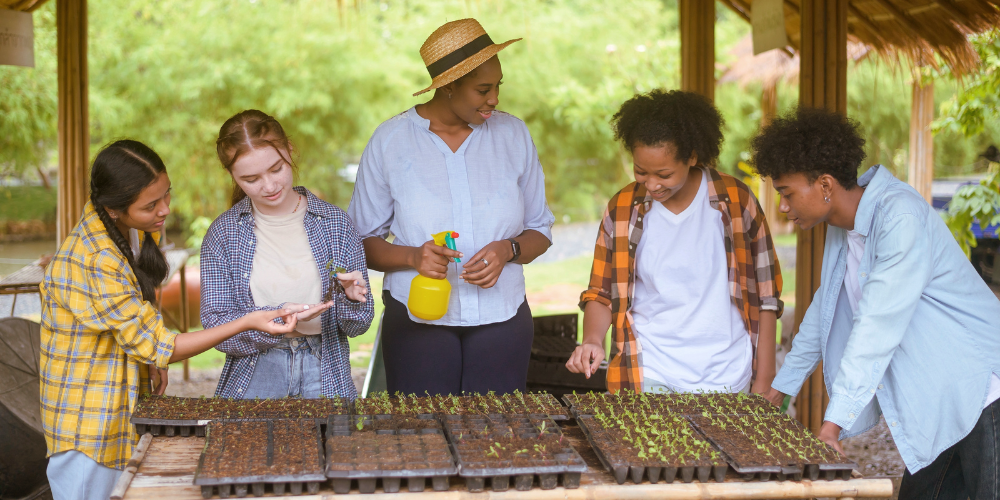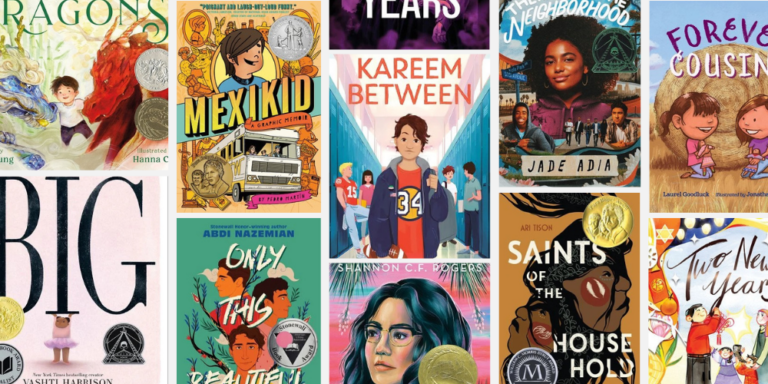If you live in the North you are familiar with the long slog from winter to spring. Although many of us enjoy snow and the “hygge” winter brings, by March we are ready to see the light at the end of winter’s long tunnel. To get your classroom to the end of the school year, we’ve put together 5 Fresh Ideas to Bring on Spring!
1. Plant and Grow
As the snow pummels our windows, we hang on to the hope that there are flowers under the snow. How to bring hope to students (and teachers) working their way to the end of the year? Plant a bulb or herb garden, of course! To begin, ask students to bring small containers (milk cartons-you can rinse out the ones they use at lunch-coffee cans, styrofoam cups, terra cotta planters, or try a garden in a glove!) to school. Depending on your students’ grade level, have them select the types of herbs or plants they want to grow. The experience of planting and growing teaches so much!
Ask students to find out:
- How much sun do the plants require?
- How much water?
- When will they need to be transplanted?
- Are the plants edible, poisonous?
- Are they annuals, perennials?
After researching the types of plants, it is time to get growing.
Each student can have a plant of their own, or create groups and each group can have plants they nurture. It can even be turned into a contest to see who keeps the plants alive the longest!
Planting and growing resources:
“7-Fast Growing Seeds for Classroom Gardens” from Teaching Expertise
“Growing Plants in Small Places with Students of All Ages,” from Project Learning Tree
“10+ Plant Science Lessons and Activities,” from Science Buddies
2. Gauge the Rain
We all know the saying, “April showers bring May flowers,” but what else do April showers bring? For this bring-on-spring idea, DIY rain gauges or rain barrels can do the trick! After the rain has accumulated, measure the amount then use it to water the plants (see number 1), or put drops of rain water under a microscope or magnifying glass to see what lives in the rain water.
Ask students to discuss and determine:
- Would you drink the rainwater?
- Where does the water come from and where does it go?
- How much rain does your area get each year?
- How much rain is considered too much or too little?
- What happens if there is a flood or a drought?
- What types of clouds produce rain?
3. Get Soaked
Sounds simple enough, yet many of us have learned to never get caught in the rain. But what if we did? For this spring idea, pay close attention to the forecast, then plan to spend part of the day in the rain!
Have students bring umbrellas, raincoats, or anything they need to enjoy being outdoors in the rain, along with dry clothes and shoes for after your adventure. Have you heard of the phrase, “there is no bad weather, only bad clothes”?
Ask students to:
- Close their eyes and let the rain land on their faces
- Open their mouths and taste the rain
- Jump in and run through puddles
- Observe the behaviors of different animals and insects when and after it rains
- Observe human behavior when it rains
- Study the sky and the movement of clouds
- Watch films with memorable rain scenes (age appropriate of course!)
- Sing songs about the rain and study the musicians who wrote them
4. Predict the Weather
After spending time outside (see #3), students’ interest in the weather may be piqued! Research how weather patterns are predicted and how meteorologists prepare us for storms and other weather events. Explore weather apps and study maps to determine the geographical locations for tornadoes, monsoons, and hurricanes. Read about climate change and discover how students and schools can take care of the Earth.
Ask students to consider:
- What kind of weather do you enjoy the most and why?
- What type of weather events occur in your area, and how do you prepare?
- What corporations are working to combat climate change?
- What is your school/classroom doing to combat climate change?
- What are you doing about climate change?
Weather and climate change resources:
“Student Activist Greta Thunberg” from Reuters
Global Climate Change from NASA
Climate Change from the EPA
Environmental Resource Library from Earth Day
Teach Climate Change to Kids from Planet Protector Academy
Educational Resources from the National Weather Service
5. Pickleball!
Nothing says spring like an outdoor game of pickleball! The game is sweeping the nation because it is easy to learn, inexpensive to play, and all ages can participate. A cross between tennis and ping-pong, played on a badminton-size court, players come in all ages, shapes, and sizes. Pickleball teaches teamwork, social skills, and gets students off screens and moving. Work on a pickleball plan alone or recruit your school’s PE teacher for an assist!
Pickleball resources:
“The Joy of Pickleball in Elementary School” by Sarah Wysocki at Edutopia
Students at R Guild Gray Elementary School Learn Pickleball video from PBS
Pickleball: A Lifetime Sport Students Love video from the PE Express podcast
Introducing Inner-City Kids to the Pickleball Craze video from CBS News Minnesota
Pickleball Lessons for Elementary from Aurora Tennis
Pickleball Lessons for Middle School from SHAPE
Pickleball Teaching Tips and Strategies by Jason Gemberling from Gopher Sport blog
Try one or more of these fresh ideas and remember to, THINK: SPRING!







